A TIME OF CHANGE — THE 1960s AND 1970s
On the cover
FRONT: Well-wishers extend hands in greeting to Senator John F. Kennedy after he spoke at Horton Plaza on November 2, 1960. An estimated 20,000 attended with a scattering of Republicans carrying anti-Kennedy signs. In the lower right is California Governor Edmund G. Brown. UNION-TRIBUNE,
BACK: Comic book fans Freddie Lewis, 12 (left) and Marshall Beck, 12, both of Normal Heights, set aside super hero comics to check out a copy of Howard the Duck at the 1976 convention. That year was notable for the first preview of the first Star Wars film that debuted in 1977.
UNION-TRIBUNE, PHOTO BY DENNIS HULS
Copyright © 2020 by The San Diego Union-Tribune
All Rights Reserved • ISBN: 978-1-59725-925-5
Individual images in this book are copyright of The San Diego Union-Tribune, San Diego History Center, and other contributors. Used with permission. No part of this book may be reproduced, stored in a retrieval system or transmitted in any form or by any means, electronic, mechanical, photocopying, recording or otherwise, without prior written permission of the copyright owner or the publisher.
Published by Pediment Publishing, a division of The Pediment Group, Inc. • www.pediment.com
Printed in the United States of America.
Foreword
This pictorial history of San Diego in the tumultuous 1960s and ’70s is coming out at an extraordinary time of a pandemic, when life seems just as uncertain and unpredictable as it was 50 years earlier. A generation that came of age back then thought it would change the world, that no one over 30 could be trusted. They reveled in sex, drugs, and rock and roll, led civil rights marches, demonstrated against the Vietnam War, and were drafted to fight in it. In many ways the now-aging Baby Boomers in their 60s and 70s are seeing another social upheaval led by their children and grandchildren who are ready to throw out the norms and follow a different path.

In his 2007 book Boom: Voices of the Sixties, journalist Tom Brokaw posited the question San Diegans might also ask today: “How do you sum up a time when change rolled across the country in hurricane proportions, when there were so many contradictions and so many paradoxes?”
At the beginning of the 1960s, San Diego’s future was not so bright, at least in the mind of Time magazine, which published a pair of articles in August 1962, contrasting “Boom Town” Atlanta and “Bust Town?” San Diego. General Dynamics had failed to gain customers for its Convair 880 jetliner, prompting a slump in jobs and 30 percent drop in housing starts. San Diego, the magazine said, was in “missile-age trouble.” Said one unnamed local, “Hell, business is so dead I won't take home more than $130 this month.”
While San Diegans wanted at all costs not to grow up like smog-congested, traffic-jammed Los Angeles, they also didn’t want to be left behind in the new decade that offered so much potential—a race to the moon, a cultural revolution, a righting of social wrongs.
San Diego gave the world Jack In the Box, ComicCon, styrofoam surfboards, and the Lorax. It built a
major research university from scratch, turned False Bay into the aquatic playland of Mission Bay (although with major environmental degradations). When a hurricane struck, it bought an abandoned rail line and built the nation’s first postwar light-rail streetcar system, the San Diego Trolley. It tore down some beautiful historic buildings but then saved many others. It fortified the Mexican border but streamed over it to enjoy street tacos, shots of tequila, and Dos Equis beer.
How do you sum up San Diego in the ’60s and ’70s? It got its groove, set its own path, raced to the future while treasuring some of its past. It marked its bicentennial in 1969 with the opening of the San Diego-Coronado Bridge. When the Star of India set sail for the first time in 53 years during the nation’s bicentennial seven years later, everybody rushed to the waterfront to see the old girl glide majestically around San Diego Bay. Then they went back to work, voted against uncontrolled growth, and made room for Vietnamese refugees in old neighborhoods.
For this third San Diego Memories book, special thanks go to Natalie Fiocre at the San Diego History Center and Merrie Monteagudo at the San Diego UnionTribune for gathering the photos (some in color) and helping identify names, dates, and places. It was especially challenging when Natalie and Merrie’s workplaces were mostly inaccessible during the pandemic.
But I was able to access the newspaper’s digital archives to track down some 300 mini-stories that went with the pictures.
Of course, this was a personal project for me, since I lived through this period while at school, UC San Diego and the U-T and saw many of the events featured here first-hand. Send me any of your thoughts at rmshowley@yahoo.com. Enjoy!
—Roger Showley, September 2020
2 SAN DIEGO MEMORIES III
PHOTO BY THANE MCINTOSH
Chapter introductions and captions by Roger Showley









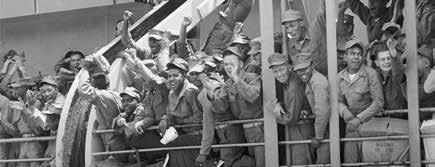




INTRODUCTION 3 Table of Contents Activism ....................................................... 11 Views and Street Scenes ............................... 23 Leisure ......................................................... 35 Public Service .............................................. 49 Education..................................................... 69 Military ........................................................ 83 Maritime ...................................................... 93 Commerce and Industry ................................ 99 Transportation ............................................ 117 Disaster, Crime, and Scandals ..................... 123 Sports ........................................................ 133 Arts and Culture ......................................... 151 Community Memories ................................. 165
San Diego Through the Years

1960
Black San Diego protesters picket against discrimination

1960
Democratic presidential candidate John F. Kennedy holds pre-election downtown rally
1961
Chargers announce move from Los Angeles to San Diego
1961
New downtown county courthouse dedicated
1960
Jonas Salk founds Salk Institute in La Jolla
1960

UC San Diego opens with first graduate students
1963
Home Tower opens downtown 1962

Time magazine calls San Diego “bust town”
1961
Mission Valley Center opens
1962
Vacation Village hotel opens in Mission Bay
1962
Nobel Prize winner Francis Crick, codiscoverer of DNA structure, named nonresident fellow at Salk Institute
1963
San Diego Unified Port District board holds first meeting
4 SAN DIEGO MEMORIES III
1963
President John F. Kennedy delivers commencement speech at San Diego State College

1963
1964
1963
Tom Hom elected as first Asian American to San Diego City Council
President John F. Kennedy assassinated 1963
UC San Diego physics professor Maria Goeppert Mayer receives Nobel Prize
Reverend Martin Luther King speaks against housing discrimination at Cal-Western and San Diego State 1964
SeaWorld opens in Mission Bay
1964
Billy Graham speaks to 180,000 at Balboa Stadium in 10-day crusade

1965 Beatles play Balboa Stadium
1965
1964
Community Concourse dedicated downtown
1965
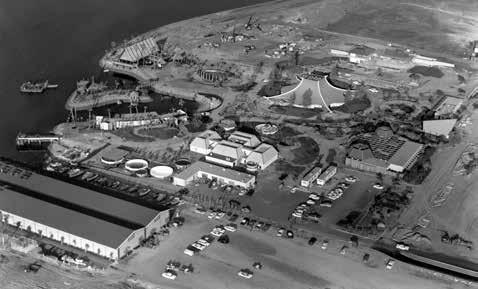
Civic Theater opens downtown
Timken Art Museum opens in Balboa Park 1965
Shamu arrives at SeaWorld
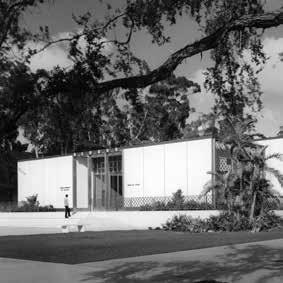
SAN DIEGO THROUGH THE YEARS 5
PHOTOS COURTESY OF THE UNION-TRIBUNE AND SAN DIEGO HISTORY CENTER

Activism
Every generation thinks it lives in unique times and thinks, in its youth, it has all the answers. The Baby Boom was no different and because of its size, it exerted an outsized influence on America. In the 1950s, it flooded the schools. In the 1960s and ’70s, it took to the streets and added its voice to a series of causes—from civil rights, to college reform, the Vietnam War, women’s rights, environmental protection, historic preservation, urban planning, and many others.
San Diego was no different. While it was a historically Republican stronghold, it saw its share of activism on many fronts. As the ’60s dawned, Black San Diegans raised their voices against discrimination in job hiring and housing. They picketed Woolworth’s and Kress stores downtown. And when President John F. Kennedy visited San Diego in June 1963, local members of the Congress of Racial Equality stood on El Cajon Boulevard and held signs opposing “funds for segregated schools.” Along the same parade route there were calls in
support of San Diego’s tuna fleet that faced challenges to fishing rights in the eastern Pacific. It was the height of the Cold War, when some people built bomb shelters in their backyards—while others cried, “Ban the Bomb” and condemned “coexistence” with the Communist Bloc.
When JFK declared the arrival of “a new generation of Americans,” the reaction showed up in many ways—from dragsters wanting to race their cars hassle-free from police to New Age lovers who wore flowers in their long hair and experimented with elicit drugs.

Some teens objected to go-go dancers, while others demanded a women’s studies program at San Diego State and minority studies at UC San Diego.
The Vietnam War heated up and San Diego’s young men faced the draft for what became an increasingly unpopular conflict. There were antiwar demonstrations on local campuses and moratorium marches, culminating in May 1970 as President Richard Nixon widened the war in Cambodia and
Laos. A UCSD graduate student, George Winne, set himself afire on the Revelle College campus and died in protest.
That same year the first Earth Day highlighted concerns about the environment as San Diegans joined national calls for clean air and water, protection for endangered species, and preservation of historic sites.
San Diego’s Mexican American community objected to plans for a California Highway Patrol station beneath the newly built San Diego-Coronado Bridge. They successfully won approval for a park in the park-short Barrio Logan community.
Chicano Park with its colorful murals on the bridge’s pillars is now a national historic site.
Activism showed up in city building, as San Diego created community planning groups that wanted a say in how their neighborhoods were developed and redeveloped. Some wanted better design, others wanted no change. A new acronym said it all: NIMBY—“not in my backyard.”
ACTIVISM 11 CHAPTER ONE
OPPOSITE: Members of the Congress of Racial Equality gather at the intersection of Fairmount Avenue and El Cajon Boulevard and carry signs demanding “Freedom Now” and “No Federal Funds for Segregated Schools” during the motorcade for President John F. Kennedy in San Diego to deliver the commencement address at San Diego State College on June 6, 1963. Wives and children of tuna boat crews held signs related to the dispute over fishing in international waters off Ecuador. UNION-TRIBUNE

78 SAN DIEGO MEMORIES III
LEFT: Lincoln High School Principal Ernest Hartzog receives essays on June 11, 1969, from students, two months after a student walkout and teacher strike. The essays offered advice on reforms.

SAN DIEGO HISTORY CENTER, UNION-TRIBUNE COLLECTION (#UT85:H8251)

OPPOSITE: Future basketball great Bill Walton (far left) represented Helix High School among other teams’ stars in this 1969 photo shoot.
SAN DIEGO HISTORY CENTER, UNION-TRIBUNE COLLECTION (#UT 85-6416-12)
BELOW LEFT: UC San Diego’s most recognized landmark, Geisel Library, was designed William Pereira and opened in 1970. It played a bit part in a sequel to the 1978 cult movie, Killer Tomatoes. UNION-TRIBUNE
BELOW: Dr. Helen M. Ranney was appointed chair of the department of medicine at the UCSD School of Medicine in 1973. She was the first woman to hold the post. UNION-TRIBUNE, PHOTO BY THANE MCINTOSH
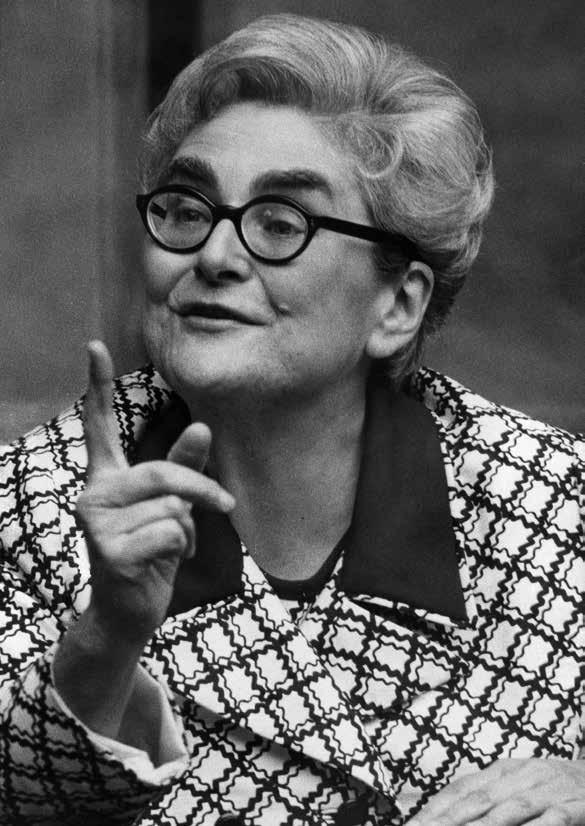
EDUCATION 79
ABOVE: UCLA nabbed its 10th NCAA crown on March 31, 1975, when it beat Kentucky 92-85 at the San Diego Sports Arena.

UNION-TRIBUNE
ABOVE RIGHT: J. C. Snead hits from the trap at the 11th hole, in which he bogeyed during the 1976 Andy Williams Open. “On the 11th hole, the wind kind of was funny and I buried my second shot under the lip of a trap,” he said. He won the tournament for the second straight year.

SAN DIEGO HISTORY CENTER, UNION-TRIBUNE COLLECTION
OPPOSITE: Willie McCovey played for the San Francisco Giants before joining the San Diego Padres for three seasons, 1974-76. The powerful lefty hit 22 home runs the first year, 23 the second, and just seven in the third. His final years were at the Oakland Athletics and Giants once again.
RIGHT: UCLA Coach John Wooden’s final game was at the 1975 NCAA playoffs in San Diego. UNION-TRIBUNE

144 SAN DIEGO MEMORIES III
UNION-TRIBUNE, PHOTO BY DAN JERRY RIFE


Arts and Culture
San Diego mixed high art with pop culture, supporting museums, Shakespeare and symphonic orchestras as well as embracing Dr. Seuss, the Beatles, and comic-books. Its cross-border connections with Mexico added a layer of internationalism other cities lacked. Its many other ethnic groups from all continents offered even more variety.
Of course, the ’60s music scene was dominated by rock and roll. The Beatles played at Balboa Stadium, the Rolling Stones at Starlight Bowl, and Elvis Presley at the Sports Arena. Every other rock star passed through town, sometimes multiple times. On the classical side were Spreckels Organ Pavilion concerts every Sunday. The San Diego Symphony performed at the Russ Auditorium in the winter season and summers at Starlight before moving on to other venues.
Most of San Diego’s big museums are concentrated in Balboa Park along El Prado
in Spanish Colonial revival buildings left over or reconstructed from the 1915 expo. The one exception was the Timken Museum of Art, an Old Masters collection housed in a mid-century modern marble jewel box.
Debutantes in ball gowns were introduced to society and then pulled on jeans and volunteered in community service projects from rummage sales to canyon cleanups. Hollywood treated San Diego as one of its backlots. Some famous movies set in or filmed in San Diego included It’s a Mad, Mad, Mad, Mad World (1963), Attack of the Killer Tomatoes (1978), Hardcore (1979), and The Stunt Man (1980). San Diego’s most well-known author was Theodor “Dr. Seuss” Geisel, who wrote and illustrated children’s titles in La Jolla from 1948 to 1991.
But the greatest pop culture scene is San Diego Comic-Con, a convention that began as a small-scale comic book swap meet with a few panels in 1970 and grew to a giant, weeklong festival with more than 130,000
delegates that took over downtown streets. Delegates in the early years set the tone for the future—dressing in costumes dedicated to their favorite characters, collecting autographs from famous illustrators, and pumping movie directors for information about upcoming blockbusters. The first previews of Star Wars were unveiled at the 1976 convention.
To visiting artists, San Diego was just another gig on a long concert or book tour. As the Union’s Beverly Beyette put in when she attended the Beatles’ 1965 press conference before their concert, “The Beatles don’t have press conferences exactly—they hold audiences. It would be easier to get invited to tea at Buckingham Palace.”
But San Diego did not take itself so seriously that it couldn’t laugh at itself. After all, it’s the only place in America where local architects give each other Orchids for good work and Onions for bad. The O&O awards program has been held since 1975.
OPPOSITE: Actor Tommy Hernández, seen here in 1970, played Don Diego as the Del Mar Fair’s official goodwill ambassador from 1947 until 1984, when he died of leukemia at age 68. He missed just one year in 1948 when he starred in a touring show of “The Cisco Kid.” His duties included crowning the annual Fairest of the Fair, emceeing grandstand shows, and appearing at business club and city council meetings. UNION-TRIBUNE

ARTS AND CULTURE 151
CHAPTER TWELVE
RIGHT: Hisao Kato scans some of his favorite Japanese comics at the 1975 Comic-Con. He said he bought American comics for the Japanese market and collected them for viewing.

OPPOSITE: Comic book fans Freddie Lewis, 12 (left), and Marshall Beck, 12, both of Normal Heights, set aside super hero comics to check out a copy of Howard the Duck at the 1976 convention. The year was notable for the first preview of the first Star Wars film that debuted in 1977. A Joe Shuster sketch of Superman sold for $250—he was a co-creator of the Man of Steel.
BELOW: It didn’t take long for fans to add costumes to comic book trades, as this 1974 photo shows at El Cortez Hotel. Cosplay grew into elaborate renditions of characters in pop culture and original concepts that sometimes took hundreds of hours and thousands of dollars to complete. The 1974 program included a “masquerade and futuristic fashion show.”

 UNION-TRIBUNE, PHOTO BY LARRY ARMSTRONG
UNION-TRIBUNE, PHOTO BY DENNIS HULS
UNION-TRIBUNE, PHOTO BY JOE FLYNN
UNION-TRIBUNE, PHOTO BY LARRY ARMSTRONG
UNION-TRIBUNE, PHOTO BY DENNIS HULS
UNION-TRIBUNE, PHOTO BY JOE FLYNN
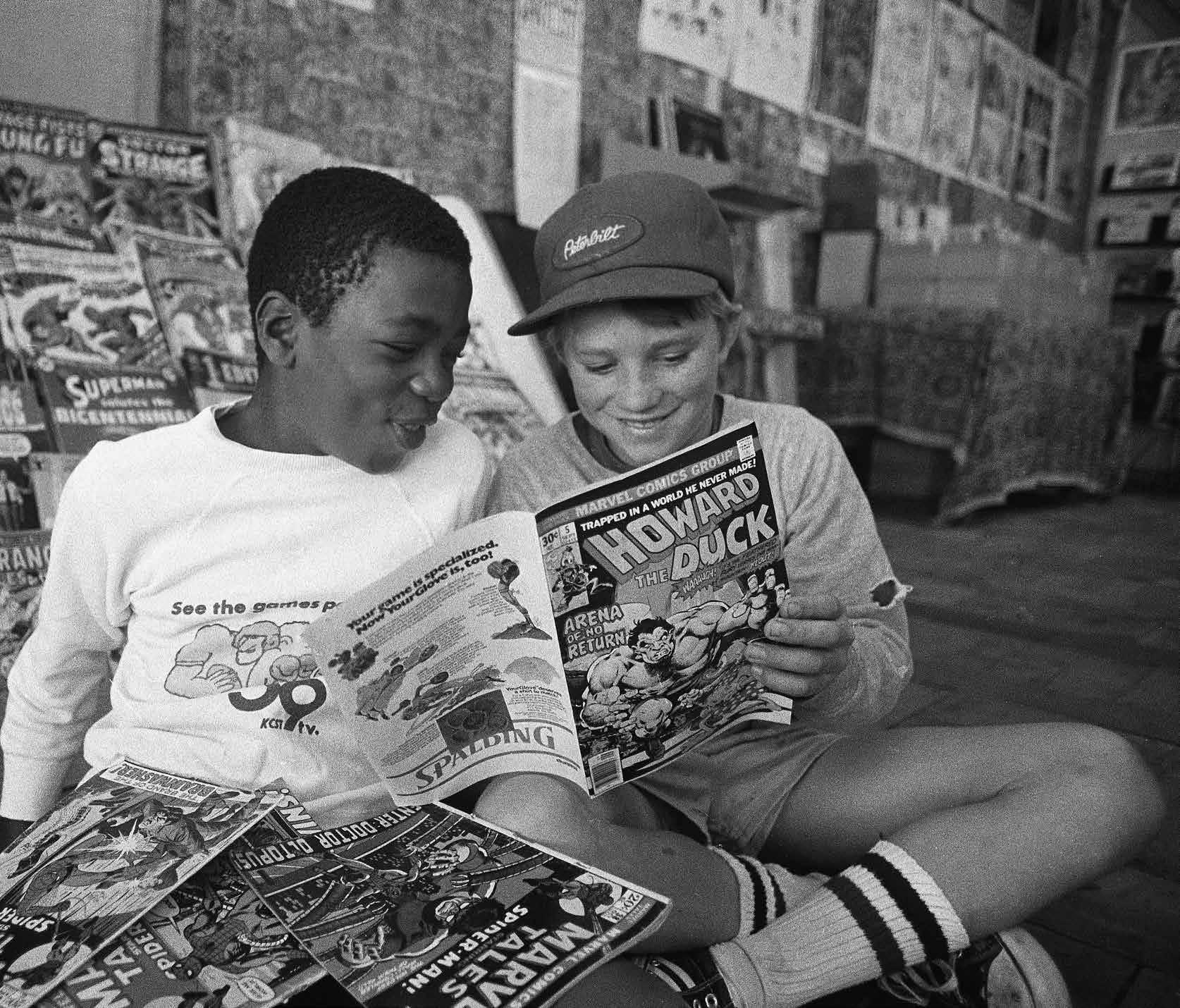

Community Memories
San Diegans responded to a call for photographic memories of their daily lives and the sample of images here show families having fun—at the beach, in a park, partying, traveling, biking, swinging in a playground, bending beneath a limbo bar.

But beyond the daily life of a county population that surpassed the million-person mark in the 1960 census (on the way to 3 million in 2010) was a place facing major changes in the subsequent twenty years. New technologies, new cultural mores, new neighborhoods, new thinking.
Evening Tribune columnist and later editor Neil Morgan took a look at the new census and realized that San Diego and the rest of the West was heading in a new direction. In Westward Tilt: The American West Today, he laid out the contrasts between the Old West and the new—longtime residents and newly arrived. He interviewed former Vice President Richard Nixon who was running for governor in 1962 (he lost) and was surprised what Nixon said about his home state:
“Californians must recognize that they
are now first in many areas, and they have to be worthy of that responsibility. They are competing not only with fellow Californians, but with the nation… This is the most exciting region in the world. It has an incredible potential. The real future of California is on the college and university campuses. Whoever is governor of this state must challenge its creative people.”
Of course, the ’60s and the campuses didn’t turn out as Nixon imagined. When he became president at the end of the decade, he was facing a clash of generations. Another insightful work appeared in 1974, San Diego: Temporary Paradise? Written by urbanologists Kevin Lynch and Donald Appleyard, the study sketched alternate futures for San Diego—one that mimicked the sprawl and environmental degradation in Los Angeles or a sustainable approach to managing growth.
“The situation of the region is chancy (when are human affairs not so),” they wrote. “But San Diego has a very possible future in which its splendid assets have been conserved, and its amenities shared more equitably among all its people…. We hope
San Diegans will find this report provocative, will agree and disagree with it, and will make their feelings known. Most of all, we hope San Diego takes charge of its future.”
In retrospect, San Diego responded to these warnings and acted to avoid “Los Angelization.” Housing policies, environmental regulation, economic diversification, and persistent lobbying at the state and national level had some effect. But on the other hand, San Diego’s continued attraction to newcomers led to higher home prices, more congestion, delays in project approvals, and many mistakes that have taken years to undo.
So it isn’t a surprise that controversy surrounds nearly every public policy issue. Voters rarely raise taxes and neighbors routinely storm city hall when they don’t like a particular development. But these are signs of an engaged citizenry, people who care about their community. And if there’s a blood shortage, firestorm, flood, or earthquake, they will set aside their differences and come together to help each other. That’s the American way and the San Diego way, too.
COMMUNITY MEMORIES 165
CHAPTER THIRTEEN
OPPOSITE: Mother and daughter cooking in the kitchen together, 1965. SAN DIEGO HISTORY CENTER (#93:18923-383-F)
CLOCKWISE FROM RIGHT:
Spring Fashions for San Diego Magazine


SAN DIEGO HISTORY CENTER (#93:18923-166)
Ed, Wanda, George, and Becky De Vall, of Oceanside, on the way to church in 1961. ED DE VALL

Early 1970s Vietnam Peace March in Oceanside. ED DE VALL

170 SAN DIEGO MEMORIES III
CLOCKWISE FROM TOP LEFT:
The #21 car, a 1954 Studebaker driven by Benny Gallo, at Cajon Speedway in the early 1960s when the track was dirt. Benny began to build this car in late 1962 and entered races between 1963 and 1965. Benny’s pit crew consisted of his friends, Tom and Tim Biggers. THE GALLO FAMILY

Sue and Michelle Gold at Mission Beach. SUE GOLD

Michelle Gold with a clown after the Coronado Fourth of July Parade in 1979. SUE GOLD

Steve

COMMUNITY MEMORIES 171
Johnson and Terrye Bowman with the snowman they built on the 2900 block of Gabrielson Avenue in Kearny Mesa on December 13, 1967. SAN DIEGO EVENING TRIBUNE. PHOTO BY GEORGE SMITH






































 UNION-TRIBUNE, PHOTO BY LARRY ARMSTRONG
UNION-TRIBUNE, PHOTO BY DENNIS HULS
UNION-TRIBUNE, PHOTO BY JOE FLYNN
UNION-TRIBUNE, PHOTO BY LARRY ARMSTRONG
UNION-TRIBUNE, PHOTO BY DENNIS HULS
UNION-TRIBUNE, PHOTO BY JOE FLYNN










